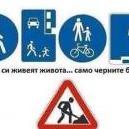Researchers Uncover A Fourth Ancestral "Tribe" To Modern Europeans
-
Теми
-
- 0 мнения
- 16 views
-
Япония се сдоби със самолетоносач за пръв път от края на Втората световна война
От Р. Теодосиев, in Военно дело
- 4 мнения
- 110 views
-
- 62 мнения
- 3274 views
-
Световната икономика вече е ангажирана с намаляване на доходите с 19% поради климатичните промени
От Р. Теодосиев, in Икономика
- 1 мнение
- 87 views
-
Руско-украинската война 2022-2024 година. 1 2 3 4 41
От Р. Теодосиев, in Руско-украинската война 2022 година.
- 1024 мнения
- 40209 views
-
-
Последно разглеждащи 0 Потребители
- No registered users viewing this page.



Recommended Posts
Напиши мнение
Може да публикувате сега и да се регистрирате по-късно. Ако вече имате акаунт, влезте от ТУК , за да публикувате.